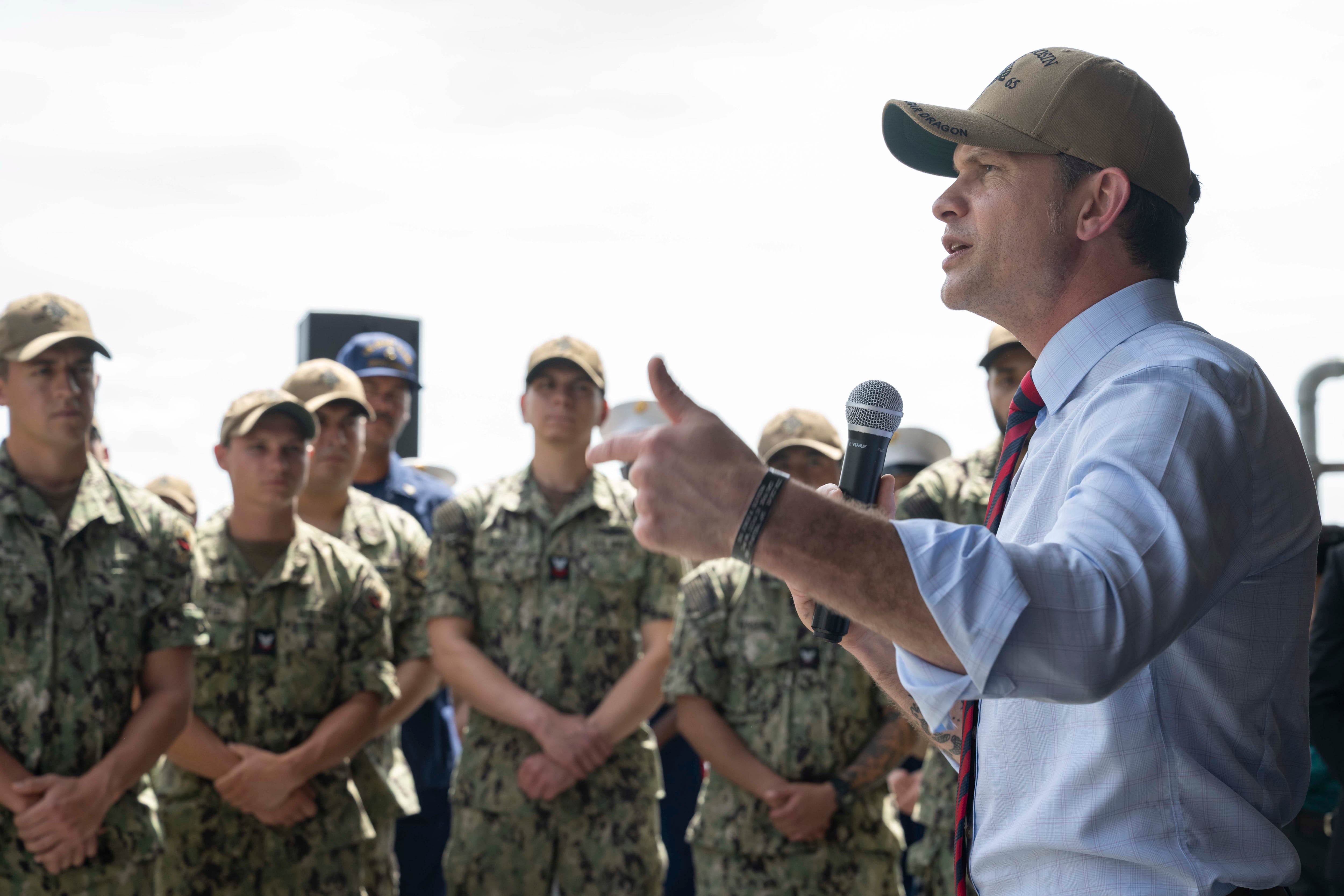INDIANAPOLIS – About a third of the remaining 36 survivors of the worst single seagoing disaster in U.S. Navy history gathered for a reunion this weekend in Indianapolis, the city for which their doomed ship was named.
One of the survivors is Edgar Harrell, 89, a former Marine who has written a book about how he and others survived the sinking of the USS Indianapolis by floating without food or water for five days in the shark-haunted waters of the Pacific.
The USS Indianapolis was halfway between Guam and the Philippines in shark-filled waters when a Japanese submarine sank it with torpedoes on July 30, 1945, in the war's closing weeks.
Just days earlier, the Indianapolis had visited the island of Tinian in a secret mission to deliver the uranium-235 and other components for the atomic bomb later dropped on Hiroshima by the Enola Gay, which took off from the remote island.
The Indianapolis' mission was so secret she sailed alone, unescorted by ships better equipped to detect and fight Japanese submarines.
The survivors gather in occasional reunions to make sure the story, which they didn't talk about for years, is not forgotten. Harrell has told his story in a book, "Out of the Depths: An Unforgettable WWII Story of Survival, Courage, and the Sinking of the USS Indianapolis," which Harrell republished in May after self-publishing it in 2005.
Harrell, who was a 20-year-old Marine corporal at the time of the disaster, told The Indianapolis Star he had just come off watch and was dozing on a pallet on deck when the ship was hit and split into three sections. The ship sank within 12 minutes.
"And that first morning, we had sharks," Harrell recalled. The men would try to float together in the water, but then one would drift away and be attacked.
An estimated 900 of the ship's servicemen survived the vessel's nighttime sinking, but before rescuers arrived five days later, drowning, delirium, dehydration and shark attacks had claimed all but 317 of the men.
The Indianapolis' death toll — 880 members out of a crew of 1,197 died — is the U.S. Navy's worst single at-sea loss of life. But reports of the tragedy were buried by the news of the Japanese surrender, and interest in the ship's story was not revived until the 1975 movie "Jaws" featured a character who told of the sinking and the survivors' days of agony.
The ship's captain, Charles Butler McVay III, was court-martialed but was posthumously exonerated by Congress and then-President Bill Clinton in 2000.





